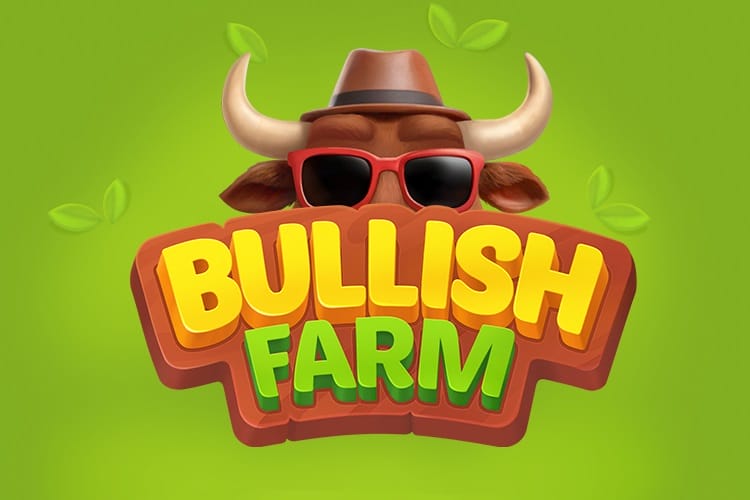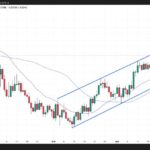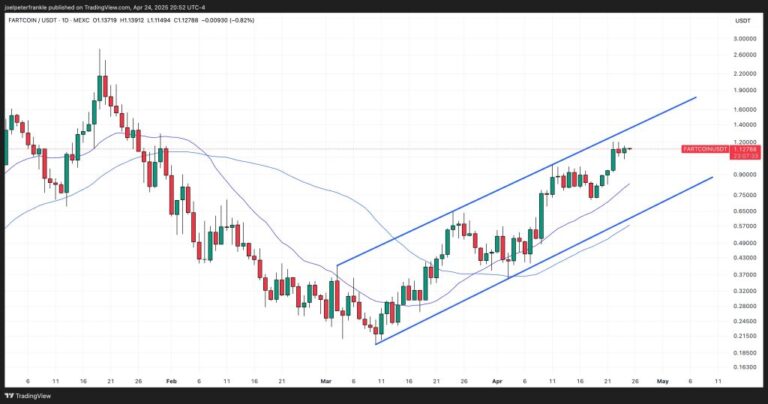Last updated:
 Why Trust Cryptonews
Why Trust Cryptonews

Web3 apps use and rely on gamification more and more (as we’ve seen with tap-to-earn games), all in order to drive user engagement. However, many projects fall short when it comes to providing meaningful blockchain element integration that aims to enrich the user experience and provide an intersection between casual gameplay and real-world rewards.
Bullish Farm illustrates this intersection by combining farming mechanics we all know and love with token-based incentives, creating a hybrid model that offers players both entertainment and profit-making opportunities. But how sustainable is this fusion of play and reward-based systems? Let’s get into it.
The Allure of Farming Games in Web3 Ecosystems
Farming mechanics have long been popular with mobile gamers, offering them satisfaction through resource management and incremental progress. In the web3 space, these same mechanics serve an additional function – creating a sense of ownership and reinforcing the economic systems inherent to blockchain technology.
Bullish Farm taps into this trend by enabling players to manage three distinct resource categories, namely:
- Crops
- Livestock
- Production lines
In the case of Bullish Farm, player success depends on balancing their long-term strategy with daily task completion. This system reflects the common structure of mobile farming games – however, it also adds another dimension to the gameplay in the form of on-chain asset management.
Bullish Farm players accumulate resources not only for cosmetic upgrades but also for keys that unlock airdrops and other rewards that may benefit the users directly. This system creates a barter-like economy within the game.
Player Engagement and Layered Challenges That Go Beyond Tapping
We’ve seen numerous farming games that work based on simple tap-to-earn systems – and while fun, these games may be too simple to enjoy in the long run. Bullish Farm chose the route of deeper progression, this time through animal management.
Players can unlock and level up their animals, transforming the repetitive gameplay into a multi-tiered system they can enjoy. This example is also reflected within the web3 design community, as it moves beyond basic player-game interactions and opts to head into the direction of sustained player engagement through layered challenges.
Another example of larger system interactions is Bullish Farm’s time-limited events that simulate harvest seasons. Over five days, players race to collect as many keys as possible to climb the leaderboard, with the top performers earning real-world rewards like $USDT. The shift from regular in-game rewards to real-world assets like cryptocurrencies also provides another insight in terms of how web3 games should align effort with tangible outcomes and rewards.
However, it’s important to note that new or casual players can still compete effectively, thanks to a reward system that encourages steady progress rather than snowballing into rewards. This accessibility is key to web3 projects aiming to broaden participation beyond crypto enthusiasts, as we’ve seen numerous games failing in this department, which resulted in a declining user base.
Bullish Farm Roadmap & Web3 Gaming Dilemma
Bullish Farm’s development roadmap shows the team’s determination towards further development and functionality implementation, with upcoming updates focusing on NFT integration. Players will soon be able to transform their in-game animals into NFTs and trade them on secondary markets – mirroring a common practice among web3 projects looking to merge gaming with digital asset ownership.
This planned expansion raises another important design question: Can the simplicity of casual gaming coexist with the intricacy of blockchain systems? The truth is that successful web3 gaming projects must walk a very fine line, maintaining user engagement without overwhelming players with complexity.
Bullish Farm’s future, like that of other games in similar positions, will depend on whether it can strike that balance, keeping gameplay accessible while introducing blockchain mechanics that enrich user experience rather than hinder it.
The Future of Web3 Games: Opportunities and Challenges
Bullish Farm exemplifies a broader trend in web3 product development, where gamification becomes both a user acquisition tool and a mechanism for economic interaction. By fusing familiar gameplay mechanics with blockchain rewards, games like Bullish Farm demonstrate the potential of decentralized platforms to engage users not only through entertainment but also through real-world incentives.
This experiment, however, highlights some of the core challenges facing the industry. As web3 games incorporate economic elements, they must maintain a careful balance between fun and financial motivation. Overemphasizing either aspect risks alienating users – casual gamers may be deterred by the financial complexity, while crypto enthusiasts may lose interest if the gameplay lacks depth.
Bullish Farm’s ongoing evolution will provide valuable insights into how web3 applications can sustain engagement over time. For now, it offers a snapshot of a new kind of experience – where farming isn’t just about growing crops, but also about participating in the digital economy.
Disclaimer: Crypto is a high-risk asset class. This article is provided for informational purposes and does not constitute investment advice. You could lose all of your capital.















